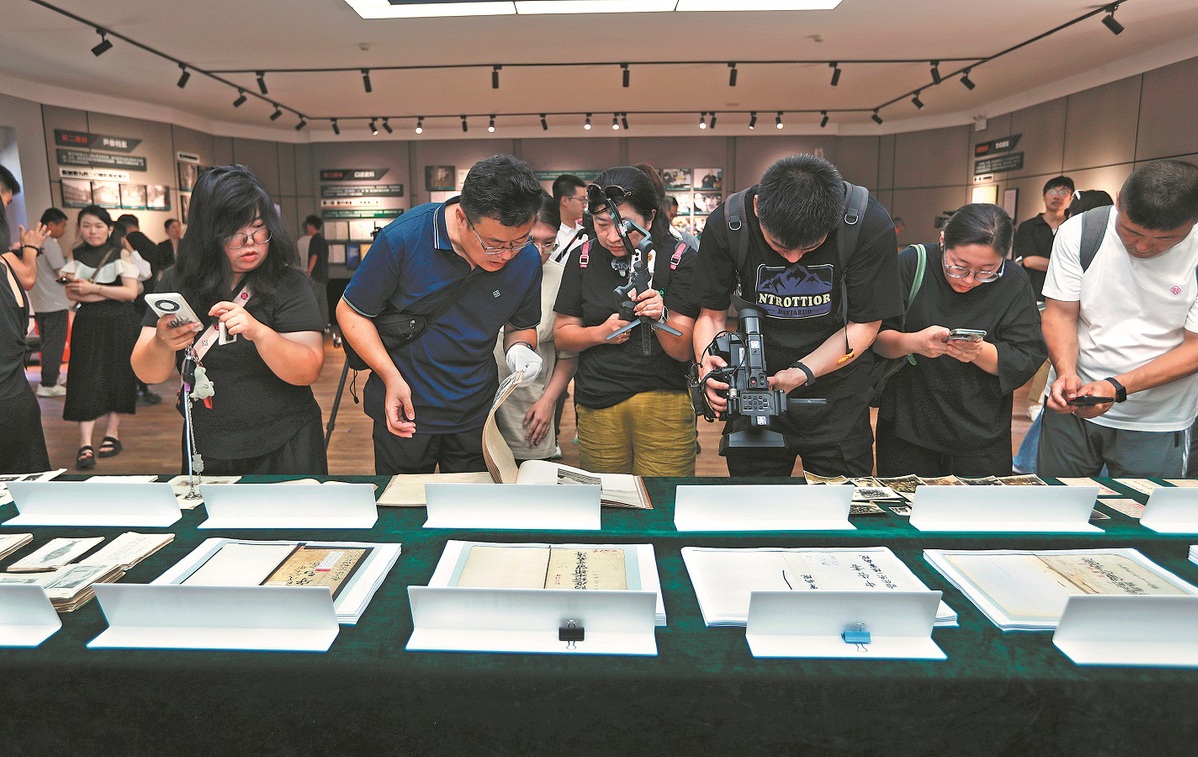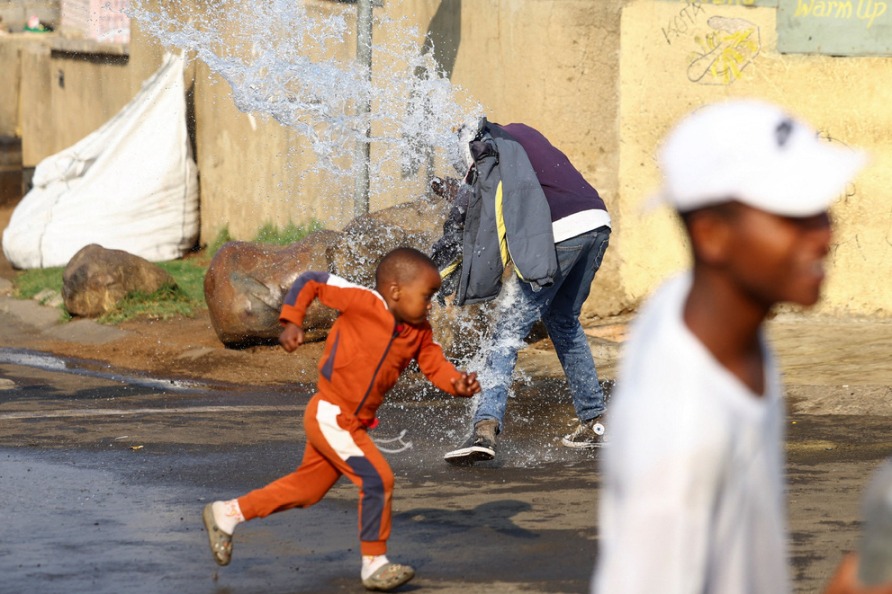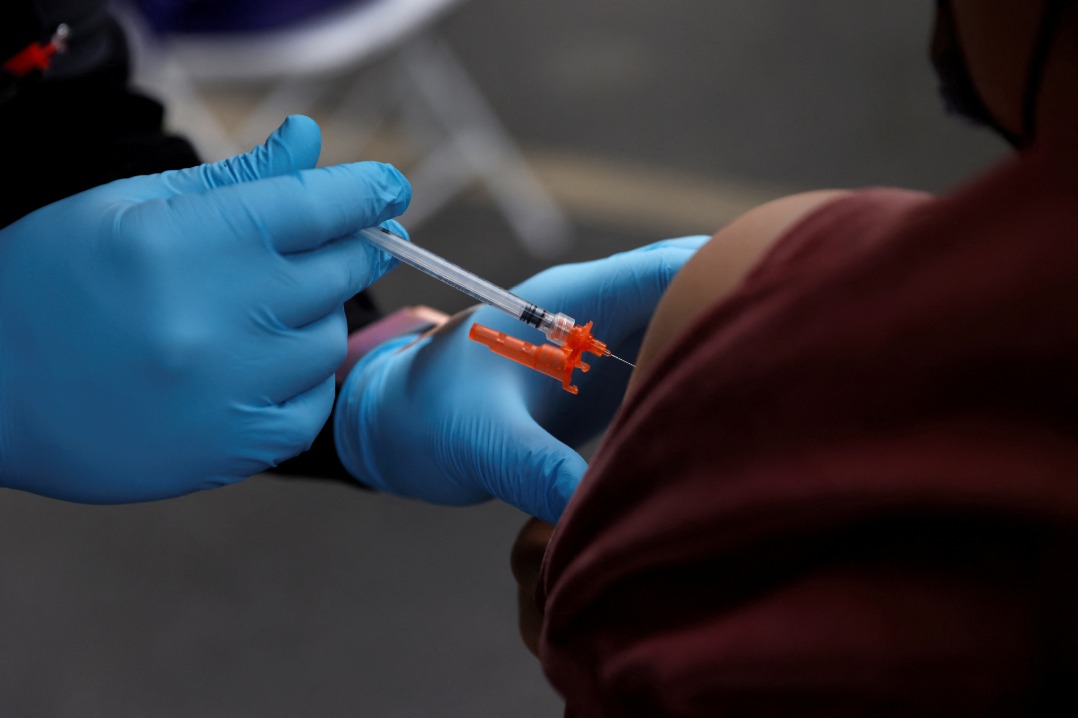Horrors of Japanese Unit 731's biowarfare cruelty persist


In early May 1942, Japanese warplanes dropped cholera-germ bombs onto the city of Baoshan in Yunnan province, China. Shiro Ishii's Unit 731 personnel had equipped the planes with ceramic bombs holding bacteria-filled gels that cracked open to release swarms of infectious flies.
On the previous day, Japanese planes had bombed Baoshan to rubble, killing some 10,000 people. Prior to that, a Japanese army team had been poisoning the city's water sources with cholera. The Unit 731 planes' ceramic fly bombs spread more of the lethal cholera to unsuspecting refugees who were fleeing to the countryside.
In 1999, survivor Zuo Yongquan recalled his childhood experience of the resulting epidemic, which is estimated to have killed at least 210,000 Chinese civilians: "My parents and whole family died in the cholera epidemic or were killed by bombing in May 1942. There was only me left. At that time, I was just 6 years old. So I begged for alms all day."
When I mention Unit 731 mass atrocities such as these to a fellow American (or any Westerner), the usual response is something along the lines of: "I've never heard anything about this. That is hard to believe. If such a terrible thing had happened, I would have heard about it."
These events really happened. I wrote a book about it, called A Plague Upon Humanity: The Secret Genocide of Axis Japan's Germ Warfare Operation, which was published in 2004. There are other books, too, about the Unit 731 network and its germ warfare attacks. And documentary films, and docudrama films, and many newspaper and magazine articles. Two major lawsuits were filed in Tokyo seeking restitution for the Chinese victims.
Some of my interlocutors express a growing puzzlement: "Why did we never hear of this history? Maybe you are making this up. Are you a fiction writer?"
My invariable reply is: no, this is nonfiction.
"The history of Japan's Unit 731 network is one of the most profoundly important series of war crimes and scientific horrors ever, with so much relevance to present day issues," I tell them.
"Which partially explains why the US covered it up in the first place, soon after Japan surrendered, secretly protecting and hiring the guilty doctors, including the program's founder and leader, Shiro Ishii, who had risen to general's rank," I add. "That is unforgivable. And the Western media continue to sidestep all this information, the enormity of this evil."
Western media "have been using wording such as 'allegedly' and 'reportedly', which casts doubt on the proven facts," I continue in my impromptu mini-lectures.
I discuss this in the preface that I wrote for the 2016 Chinese language edition of A Plague Upon Humanity. The word "testing" is also used for germ warfare assaults, leaving the impression that these were preparations for use, rather than actual bioweapon attacks. And they give casualty numbers that are far too low for the victims of Japan's biological prisons and bacterial warfare.
Imperial Japan's biological and chemical warfare attacks, and their human-experiment death camps, should be noted for the vast scale of their mass death on top of their unthinkable cruelty.
In addition to Yunnan province's 210,000 cholera deaths, in 1943, 200,000 people were killed by cholera biowarfare in Shandong province. In addition, over 50,000 died from bubonic plague and cholera bacteria spread by Unit 731 in Zhejiang province in 1942, and more than 20,000 succumbed to Ishii's bubonic plague in Inner Mongolia.
Those murdered in the gruesome germ and chemical experiments of the laboratory-prisons and army field hospitals included at least 20,000 people of various ethnicities suspected of "anti-Japanese activities" and some American prisoners of war, in addition to the many Chinese and Soviet prisoners of war.
Typhoid and dysentery germ assaults killed thousands of refugees escaping the invasion of Hong Kong in ships; thousands more died from Unit 731 squads spreading those bacteria in Heilongjiang province, where the unit's extremely large, secret headquarters complex was located in Pingfang district of Harbin. Furthermore, hundreds of thousands more perished from many other germ attacks there and throughout China that included the use of anthrax and plague microbes, which persisted in the soil and in the bodies of rodent populations for decades after the war.
There also were the "rotten leg"-afflicted and "rotten nose"-afflicted villagers who since 1942 lived their lives suffering chronic pain and disability from Unit 731 bacteria that proved difficult to diagnose. I interviewed one brave victim of that bioweapon 20 years ago in New York City. Her face had been permanently disfigured by the germs.
I also interviewed one of the perpetrators in 2006: a very remorseful Japanese ex-soldier, Yoshio Shinozuka, who, at Unit 731's Pingfang base, had assisted in the vivisections, without anesthesia, of four male prisoners whom Ishii's doctors had infected with bubonic plague. The young men lay dying on a vivisection table as they were cut open, their organs removed and placed in culturing cans for study. Shinozuka also told me that he had seen a mother and her small child among the victims in the Unit 731 inner prison yard — they were certainly both murdered for chemical and germ development, or other ghastly forms of scientific research.
This interview took place in the city of Changde, Hunan province, where beginning in October 1940, the extra-virulent plague germs that Shinozuka had helped to create in prisoners' bodies caused over 10,400 people to die of the disease. Ishii's planes circled low over Changde and environs, 1,400 miles distant from Pingfang, and dropped laboratory-infected fleas, along with grain to attract mice and rats upon which the fleas could find a host.
There is a new docudrama, 731 Biochemical Revelations, set for release in cinemas in China on Sept 18. I have not yet seen it. This film follows the release of Dead to Rights, a movie that is set during the Rape of Nanjing, and which has been a No 1 box office draw this year. I have attempted in this column to impart the genocide-scale immensity of Unit 731's activities, which I have found absent in previous cinema on the topic, and which I hope to see in the much-anticipated new film.
Unit 731's continental reach stretched to branch units in Beijing, Guangzhou, Changchun, Nanjing, Singapore and many other places. The following is an account of the acts of Ishii's death factory in Nanjing, Unit 1644. For seven long years after the initial mass atrocities, this facility continued the Dead to Rights Nanjing Massacre in spectral 731 Biochemical Revelations form.
Former Unit 1644 member Hiroshi Matsumoto recalled in a 1997 interview that the Nanjing prisoners "were all naked and kept in cages that looked like cages for birds or animals, very small. … They always had to have their legs crossed. … After we injected live germs into prisoners we would wait until the germs spread in the blood, then we would take out all the blood.…The whole body would start shaking in convulsions." The blood would be used "probably to culture germs for contaminating food, or for feeding fleas that would be scattered over an enemy area."
The author is an independent historian specializing in Northeast Asia and author of A Plague Upon Humanity: The Secret Genocide of Axis Japan's Germ Warfare Operation.
The views do not necessarily reflect those of China Daily.

































